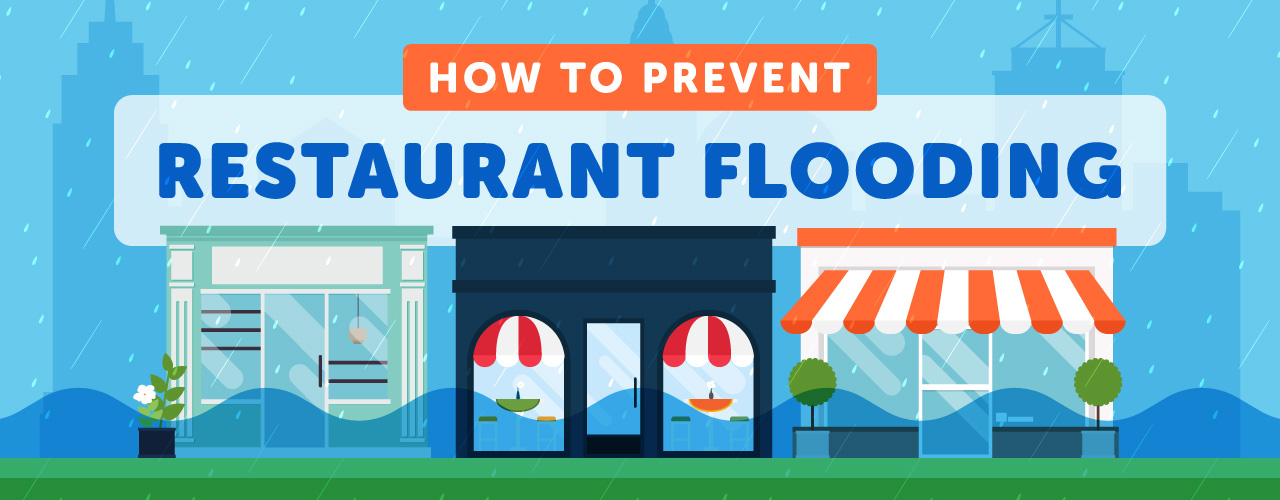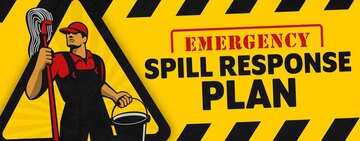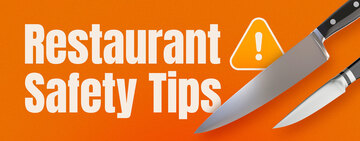
Severe weather events like flooding wreak havoc on businesses, leading to billions of dollars of damage each year. While some regions are more prone to flooding than others, flooding can happen anywhere under the right circumstances. Some floods develop gradually over time, giving business owners a chance to prepare and mitigate risks, while others strike suddenly, causing chaos in moments and necessitating an immediate evacuation. Therefore, businesses must have a well-thought-out plan in case flooding occurs. Below, we’ll outline how to prevent your business from flooding and minimize damage in the event it occurs.
1. Research Whether You Are In a Flood Zone
A flood zone, also known as a special flood hazard area, is a specific geographic area identified as a flood risk. These zones are typically designated on your community flood map, which can be accessed through the FEMA Flood Map Service Center or by contacting your local authorities. Each zone carries a specific designation and necessitates a different response.
- Zone A: This zone represents areas with the highest risk of flooding.
- Zone V: Zone V includes high-risk coastal areas that face additional risks from storm waves.
- Zone B&X: This zone indicates a moderate flood hazard. While the risk is not as high, businesses should still implement flood prevention measures.
- Zone C&X: Businesses in this zone face minimal flood hazards but should educate themselves on potential flooding risks.
- Zone D: In Zone D, flood risk has not been determined, and no flood analysis has been conducted. However, businesses in this zone should still be vigilant and prepared for potential flooding events.
2. Develop a Response Plan

A well-thought-out response plan will not only prevent confusion but also minimize damage and ensure the safety of everyone involved in the event of a flooding emergency. Train employees on your response plan so that they know what to do when a flood occurs, and make sure your plan is easy to communicate to others. Keep in mind that your response plan should be specific to your business and needs, and the best plan for you may be different than the best plan for another business. To put together the best response plan for you, focus on these points of emphasis:
- Identify flood causes and problem areas: Designate potential flooding causes specific to your business location. Account for factors such as your local climate, including the amount of rainfall you typically receive. You should also consider environmental factors such as whether your business is in a flood-prone area like a valley, as well as infrastructure concerns like how road closures could impact your response efforts.
- Take preventative measures: Prepare your business for flooding by investing in flood protection supplies and addressing any structural vulnerabilities.
- Create a response team: Establish a response team within your organization to coordinate and execute your plan. Clearly define each team member's roles and responsibilities so they can act swiftly and decisively in the event of a flood.
- Know how to take action: Communication among team members is crucial, with a focus on the safety of guests and employees. Secure the building, shut down equipment or utilities that pose a threat, and have evacuation procedures in place if needed.
- Test your plan: Regularly conduct emergency drills to test the effectiveness of your response plan, identify potential issues or gaps in your plan, and make necessary updates.
3. Invest in Flood Prevention Products

Flood prevention products are one of the most effective ways to divert water from your business and minimize the risk of flooding. They come in many forms, allowing you to stay prepared in the event of an emergency. The flood prevention solution that fits your needs will vary depending on where your business is located, how much flooding you expect, how much your business is at risk, and your budget. Remember to set your flood barriers up before flooding occurs for the best results.
- Sandbags: Sandbags are one of the most affordable and convenient ways to prevent flooding. When placed properly, they form a solid barrier. However, sandbags can leak, which makes it important to have a pump on hand to remove residue.
- Flood barriers: For a sturdier, fixed solution, flood barriers are a great option. These barriers come in several styles, including inflatable barriers and fixed plastic barriers, but depending on the model they can be difficult to set up. Some even attach to your windows or doors to provide a permanent shield.
- Modular flood prevention systems: If you're looking for a larger-scale solution, modular flood prevention systems cover a greater area. They are the most sturdy option for protecting your business from flooding.
4. Focus on Structural and Environmental Defenses
In many cases, the area surrounding your business can serve as your best defense with proper planning. Focus on the exterior of your business, taking time to plan your landscaping layout. Analyze where water could flow and what zones are most susceptible to water accumulation, identifying key problem areas like slopes and ditches. You should also focus on structural weaknesses in your buildings, paying special attention to pre-existing damage or vulnerable design flaws. Some locations will be easier to plan around than others, but there are still preventative measures you can take. By investing in structural and environmental defenses, you can significantly reduce the risk of flooding and protect your business assets.
- Vegetation and landscaping: Planting vegetation and keeping up with proper lawn care reduces runoff and erosion, ultimately preventing flooding from reaching dangerous levels.
- Slopes: If there are slopes on your property, ensure they direct rainwater away from your facilities.
- Downspouts: Downspouts direct rainwater away from your roof and business.
- Sealed walls: Regularly inspect your building for any signs of wear or damage that could compromise its structural integrity and seal them with waterproof coatings.
- Maintain wells: If your business has a well on-site, ensure it is properly maintained and sealed to prevent contamination of your water supply.
5. Keep Essential Components Raised
Elevate key components to minimize the impact of water damage and maintain operational continuity. The cost of repairing submerged components can be significant, often necessitating extensive electrical or mechanical work or requiring you to replace them entirely. While flooding may only last a few days, long-term damage to your electrical work or HVAC system can leave you out of operation long-term. Consider hiring an electrician or contractor to assist you in flood-proofing your business, as their expertise can ensure the job is done the right way and give you peace of mind.
- Electrical work: Raise electrical components such as switches, sockets, circuit breakers, outlets, and wiring at least a foot above the base flood elevation. Exposure to water can prove catastrophic for electrical components, as it can lead to malfunctions and even fire hazards.
- HVAC systems: Consider investing in a roof-based HVAC system if feasible for your business. These systems can be costly to replace and can leave your business unable to function if they are out of order.
6. Have a Backup Power Source

When flooding causes your main power source to go out, having a backup generator provides critical support. This backup power source will ensure that essential components of your business can continue running, minimizing downtime and potential damage. When investing in a backup generator, choose one that will safely operate during a flood. These generators should be capable of powering necessary equipment such as lights to ensure that your employees can navigate the workspace in the dark. Additionally, having a backup power source for heating is essential, especially if flooding occurs during colder months. Ensure your generator connects to your sump pump to remove water from lower levels of your business, such as the basement.
7. Protect Internal Components
During a flood, sometimes the most costly damage can be to the inside of your business. Electrical components, appliances, and gas or water lines are also susceptible to damage, which may not be as easy to identify as external or structural damage. For that reason, you should invest in these safeguards:
- Disconnect valves: Invest in disconnect valves that can shut down flow in an emergency to reduce the risk of fires and prevent gas leaks.
- Cutoff points: Ensure cutoff points are secure to prevent electrical components from being flooded. By safeguarding these points, you can avoid the risk of short circuits, electrical fires, and electrocution.
- Backflow prevention: Consider investing in a backflow prevention check valve to keep contaminated or dirty water from overflowing your water supply. This valve helps prevent backflow, ensuring your clean water remains uncontaminated.
Back to Top
By taking proactive measures to prevent flooding and preparing for emergencies, businesses can safeguard their operations and minimize the impact of unforeseen events. Stay ahead of the curve by preparing for the worst-case scenario and protect your business from the devastating effects of flooding.





